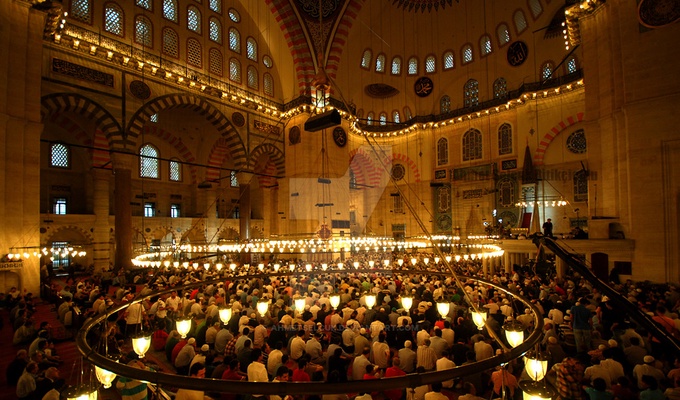Eid al-Fitr is the earlier of the two official holidays celebrated within Islam . The religious holiday is celebrated by Muslims worldwide because it marks the end of the month-long dawn-to-sunset fasting of Ramadan. It falls on the first day of Shawwal in the Islamic calendar; this does not always fall on the same Gregorian day, as the start of any lunar Hijri month varies based on when the new moon is sighted by local religious authorities. The holiday is known under various other names in different languages and countries around the world. The day is also called Lesser Eid, or simply Eid.
Eid al-Fitr has a particular salat (Islamic prayer) that consists of two rakats (units) generally performed in an open field or large hall. It may only be performed in congregation (jamāʿat) and features seven additional Takbirs (raising of the hands to the ears while saying "Allāhu ʾAkbar", meaning "God is the greatest") in the Hanafi school of Sunni Islam: three at the start of the first rakat and three just before rukūʿ in the second rakat. Other Sunni schools usually have 12 Takbirs, similarly split in groups of seven and five. In Shia Islam, the salat has six Takbirs in the first rakat at the end of qira'a, before rukūʿ, and five in the second. Depending on the juristic opinion of the locality, this salat is either farḍ (فرض, obligatory), mustaḥabb (strongly recommended) or mandūb (مندوب, preferable). After the salat, Muslims celebrate the Eid al-Fitr in various ways with food ("Eid cuisine") being a central theme, which also gives the holiday the nickname "Sweet Eid" or "Sugar Feast".
